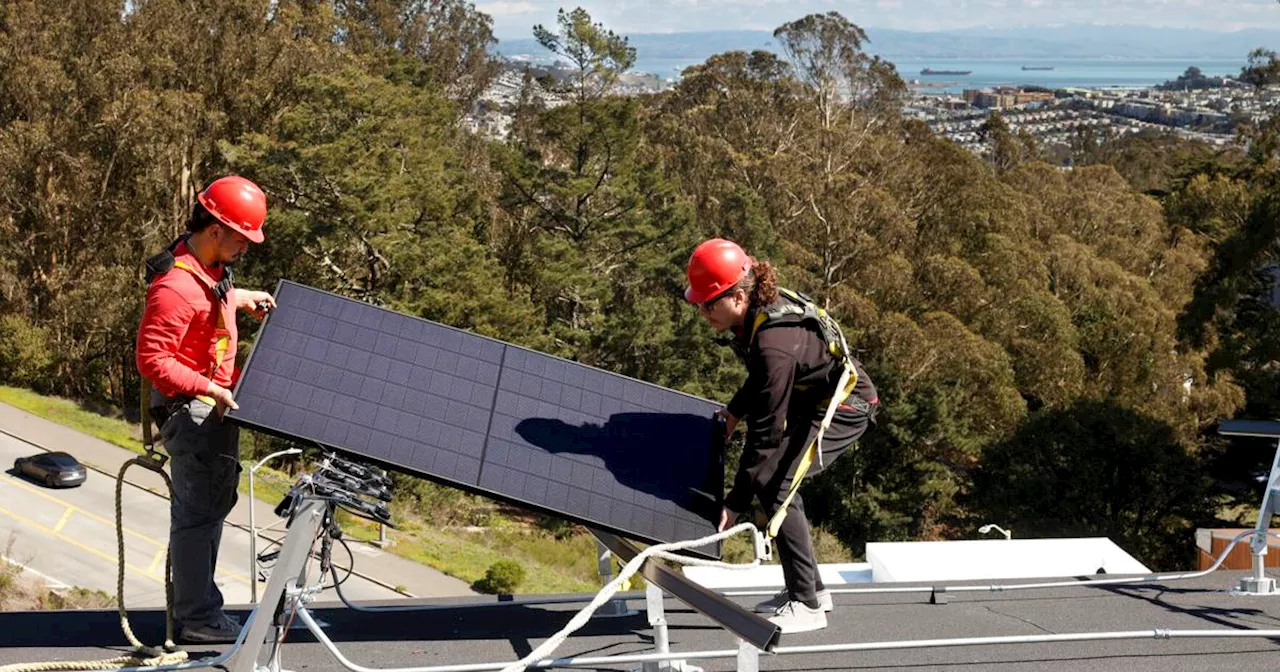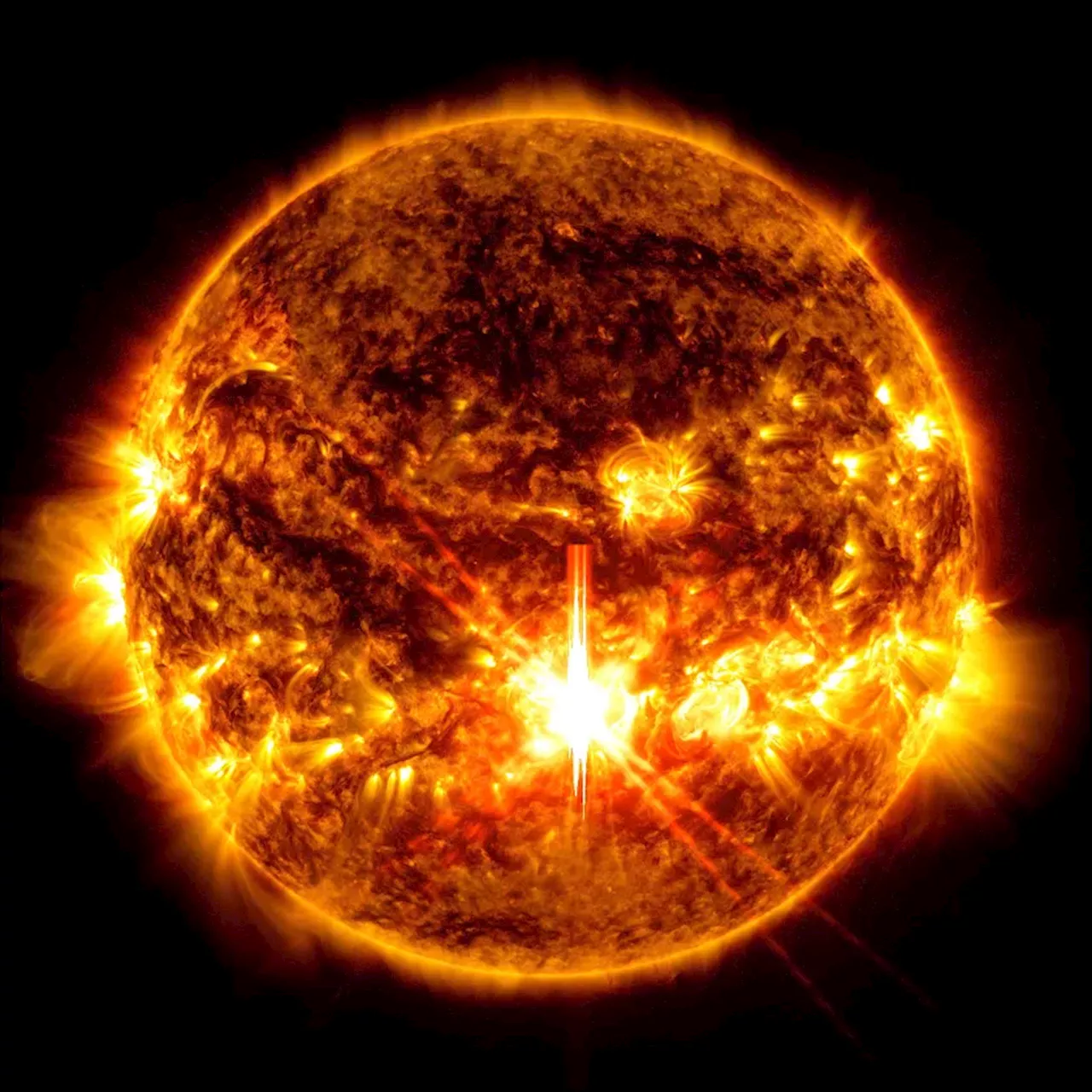A new study using machine learning algorithms demonstrates the ability to accurately predict solar flares, coronal mass ejections (CMEs), and geomagnetic storms with a significant reduction in uncertainties compared to traditional methods. This breakthrough could lead to better preparedness for the potential disruptions caused by these solar events, such as power outages, communication problems, and auroral activity.
To the casual observer, the Sun seems to be the one constant and never changing. The reality is that the Sun is a seething mass of plasma, electrically charged gas which is constantly being affected by the Sun’s magnetic field. The unpredictability of the activity on the Sun is one of the challenges that faces modern solar physicists. The impact of coronal mass ejections are one particular aspect that comes with levels of uncertainty of their impact.
But machine learning algorithms could perhaps have given us more warning! A new paper suggests algorithms trained on decades of solar activity saw all the signs of increased activity from the region called AR13664 and perhaps can help with future outbursts.Coronal Mass Ejections or CMEs, are massive bursts of plasma ejected from the Sun’s corona into space due to disruptions in the Sun’s magnetic field. These explosive events are often linked to flares and occur when magnetic field lines suddenly realign, releasing vast amounts of energy. CMEs can travel at speeds ranging from a few hundred to several thousand kilometres per second, sometimes reaching Earth within days, if their trajectory is in our direction. When they arrive, they can interact with our magnetosphere and trigger geomagnetic storms, potentially disrupting satellite communications, GPS systems, and power grids. Additionally, they can lead to auroral activity, creating breathtaking displays of the northern and southern lights.A colossal CME departs the Sun in February 2000. erupting filament lifted off the active solar surface and blasted this enormous bubble of magnetic plasma into space. Credit NASA/ESA/SOHO Accurately forecasting these types of events and how they impact our magnetosphere has been one of the challenges facing astronomers. In a study authored by a team of astronomers led by Sabrina Guastavino from the University of Genoa, they applied artificial intelligence to the challenge. They used the new technology to predict the events that were associated with the May 2024 storm, the corresponding flares from the region designated 13644 and CMEs. The storm unleashed intense solar events including a flare classed as an X8.7!Using AI the team were able to point machine learning technology to the vast amounts of previously collected data to uncover complex patterns that were not easy to spot using conventional techniques. The 2024 event was a great, and unusual opportunity to test the AI capability to predict solar activity. The chief objective was to predict the occurrence of solar flares, at how they changed over time, CME production and ultimately, to predict geomagnetic storms here on Earth. They ran the process against the May 2024 event with impressive results. According to their paper, the prediction revealed ‘unprecedented accuracy in the forecast with significant reduction in uncertainties with respect to traditional methods.’ The results of the CME travel times to Earth and the onset of geomagnetic storms was also impressively accurate. The impact of the study is profound. Power grid outages, communication and satellite issues can be a major disadvantage when CMEs hit Earth so the application of the machine learning AI toolset to predicting solar activity looks like an exciting advance. For those of us keen sky watchers, we may also get a far better forecast of auroral activity too
Machine Learning Solar Activity Coronal Mass Ejections Geomagnetic Storms Solar Flares
United States Latest News, United States Headlines
Similar News:You can also read news stories similar to this one that we have collected from other news sources.
 Anker's Solix Solar Beach Umbrella harnesses Perovskite Solar TechAnker's new Solix Solar Beach Umbrella features a perovskite solar cell technology that promises higher efficiency and lower costs compared to traditional silicon-based cells. The umbrella can generate up to 100W of power, enough to keep Anker's Solix EverFrost 2 Electric Cooler running indefinitely in sunny conditions.
Anker's Solix Solar Beach Umbrella harnesses Perovskite Solar TechAnker's new Solix Solar Beach Umbrella features a perovskite solar cell technology that promises higher efficiency and lower costs compared to traditional silicon-based cells. The umbrella can generate up to 100W of power, enough to keep Anker's Solix EverFrost 2 Electric Cooler running indefinitely in sunny conditions.
Read more »
 Jackery’s Solar Roof announced alongside new solar generator at CES 2025Jackery’s Solar Roof features curved tiles in terra-cotta red or black with a 25 percent conversion efficiency, while its DC-DC car charger outputs 600W.
Jackery’s Solar Roof announced alongside new solar generator at CES 2025Jackery’s Solar Roof features curved tiles in terra-cotta red or black with a 25 percent conversion efficiency, while its DC-DC car charger outputs 600W.
Read more »
 Jackery Unveils Solar Roof Tiles, New Solar Generators at CES 2025Jackery is showcasing its latest innovations in home energy solutions and portable power at CES 2025.
Jackery Unveils Solar Roof Tiles, New Solar Generators at CES 2025Jackery is showcasing its latest innovations in home energy solutions and portable power at CES 2025.
Read more »
 San Francisco Solar Company Aurora Solar Lays Off 58 WorkersAurora Solar, a San Francisco-based solar energy software company, has laid off 58 employees, marking the second round of job cuts in a year. The company cited 'ongoing macroeconomic challenges and continued uncertainty in the solar industry' as reasons for the layoffs. Aurora plans to refocus its business in response to the current market conditions.
San Francisco Solar Company Aurora Solar Lays Off 58 WorkersAurora Solar, a San Francisco-based solar energy software company, has laid off 58 employees, marking the second round of job cuts in a year. The company cited 'ongoing macroeconomic challenges and continued uncertainty in the solar industry' as reasons for the layoffs. Aurora plans to refocus its business in response to the current market conditions.
Read more »
 Solar Energy to Drive Electric Power Growth in 2025, EIA PredictsThe U.S. Energy Information Administration (EIA) forecasts that solar energy will be the primary driver of growth in the electric power industry this year. The EIA predicts utilities and independent power producers will add 26 gigawatts of solar capacity in 2025, continuing a trend of significant solar power additions.
Solar Energy to Drive Electric Power Growth in 2025, EIA PredictsThe U.S. Energy Information Administration (EIA) forecasts that solar energy will be the primary driver of growth in the electric power industry this year. The EIA predicts utilities and independent power producers will add 26 gigawatts of solar capacity in 2025, continuing a trend of significant solar power additions.
Read more »
 Chinese Institutes for Medical Research Seeks Outstanding Scientists in AI, Data Science, and Machine LearningThe Chinese Institutes for Medical Research (CIMR) in Beijing is hiring scientists focused on Artificial Intelligence, Data Science, and Machine Learning in Health Care and Medical Sciences. Successful candidates will collaborate with physician scientists at CCMU-affiliated hospitals and have access to a wide range of medical data. The CIMR offers competitive salaries, generous start-up packages, and research funding.
Chinese Institutes for Medical Research Seeks Outstanding Scientists in AI, Data Science, and Machine LearningThe Chinese Institutes for Medical Research (CIMR) in Beijing is hiring scientists focused on Artificial Intelligence, Data Science, and Machine Learning in Health Care and Medical Sciences. Successful candidates will collaborate with physician scientists at CCMU-affiliated hospitals and have access to a wide range of medical data. The CIMR offers competitive salaries, generous start-up packages, and research funding.
Read more »
